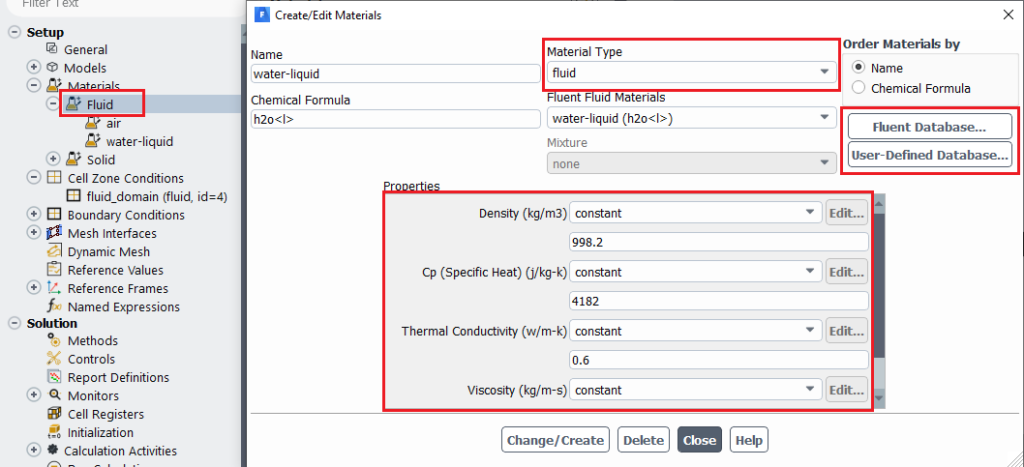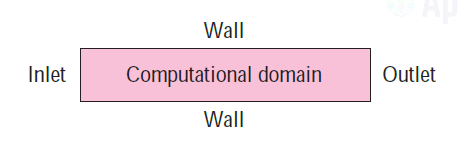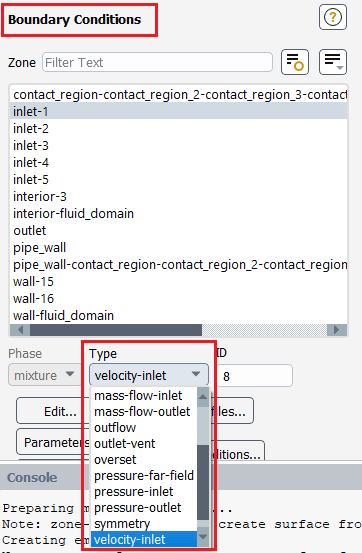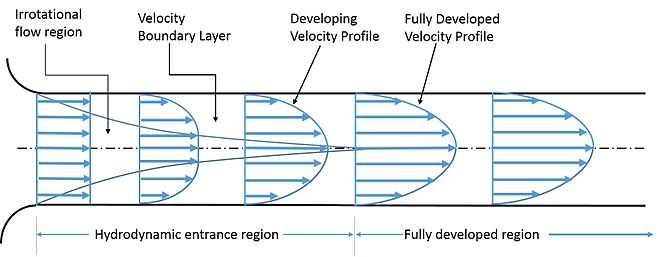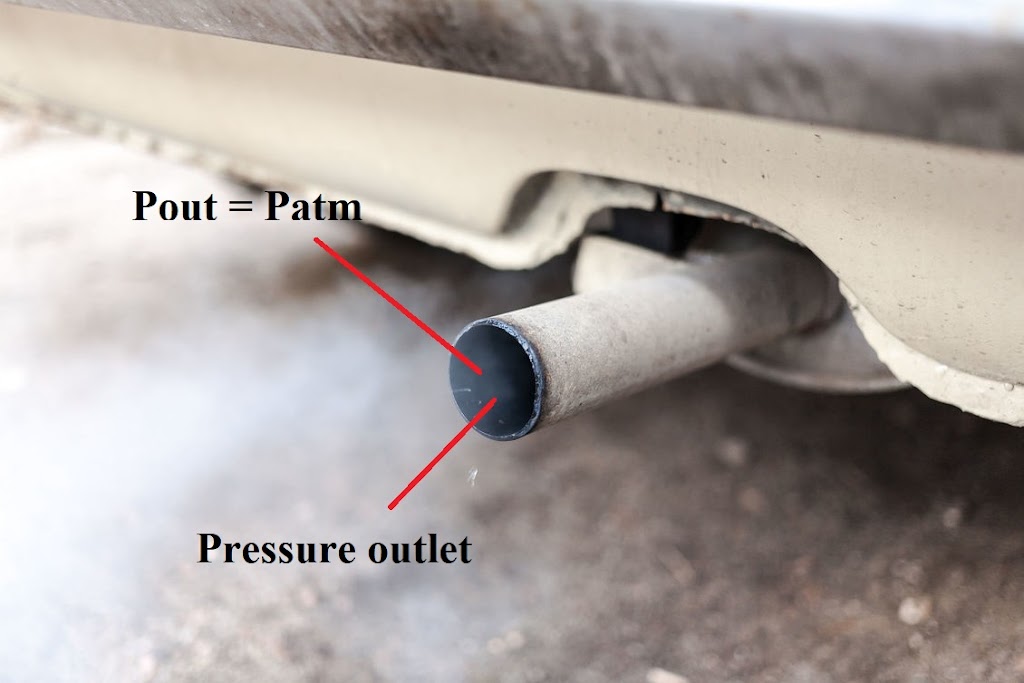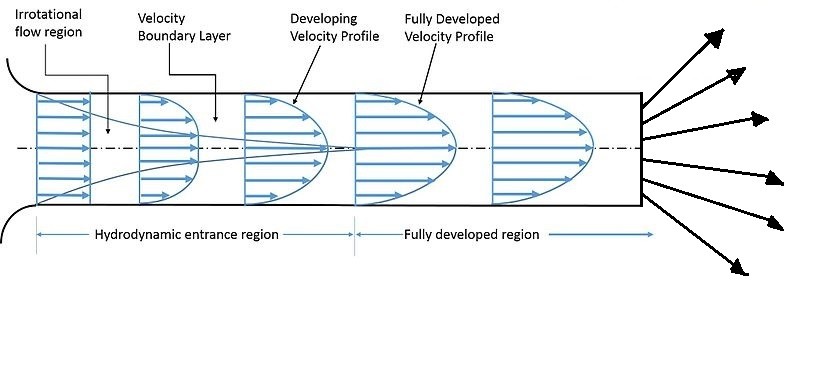Cell Zone Conditions & Boundary Conditions
Cell zone and boundary conditions specify the thermal variables and flow variables on the boundaries of your physical model. Therefore, They are critical things of your ANSYS Fluent simulations and it is
important that they are specified properly.
important that they are specified properly.
Cell Zone Conditions
There are mainly two cell zones available in ANSYS.
(1) Fluid
(2) Solid
Porous zones in ANSYS Fluent are treated as fluid zones. Detailed information on the various cell zones is given below.
Fluid
-
A fluid zone is a cell group for which equations are solved. The input required for a fluid zone is the fluid material ( water, petrol, diesel, oil, air, etc..) which will flow through the body. It is required to identify the material which is flowing through the fluid zone. so that the proper material properties will be used. You can set material properties by clicking on material > fluid. The following dialog box will open as shown in fig.
-
-
First of all, you can choose the default fluid material that is already stored in a fluent database. if required fluid material is not available in a fluent database then you can create fluid material by clicking on “User-Defined Database” and applying appropriate properties of the fluid.
-
Solid
-
It is also a group of small cell. In solid cell groups, flow equations are not solved, only a heat conduction problem is solved in solid cell zone. The computational domain is treated as a solid. The type of solid material is the input for a solid zone. Refer above fig a, change material type as fluid to solid by click on the “Material type” option. you can choose default solid material which is already stored in a fluent database. if required solid material is not available in a fluent database then you can create solid material by click on “User Defined Database” and apply the appropriate properties of solid.
-
People also search INFLATION GROUP, INFLATION OPTIONS, TRANSITION RATIO
Boundary Conditions
- Boundary conditions must be carefully applied at all boundaries of the computational domain. proper boundary conditions give accurate results. there are many types of boundary conditions use in ANSYS like velocity inlet and outflow, pressure inlet and pressure outlet, mass flow rate, inlet vent, intake fan, outlet vent, and exhaust fan.
- The most used boundary conditions are velocity inlet and outflow, pressure inlet and pressure outlet, mass flow rate. Here we show some basics of these boundary conditions.
velocity inlet and outflow boundary conditions
-
There are some options at the boundaries through which fluid enters the computational domain (inflow) or leaves from the computational domain (outflow).
- Generally fluid enters as two types of known properties, either velocity is known ( water enter in the pipe with x velocity ) or pressure ( pressurized fluid coming or enter in the pipe ) are known.
- velocity inlet boundary conditions are used when inlet velocity is well known and to define the flow velocity at the outlet. We specify the velocity of the incoming flow at velocity inlet boundary conditions. If you want to solve turbulence equations and/or energy equations, then the temperature and turbulence properties of the incoming flow need to be specified. This boundary condition is applicable to both incompressible and compressible flows.
- At a velocity inlet boundary conditions, Pressure is not specified. This may lead to mathematical over-specification. The pressure at a velocity inlet is adjusted itself to match according to the flow field.
- At the outflow boundary, the only velocity is specified. Turbulence quantities and temperatures are specified if you want to solve energy and/or turbulence equations. When the flow is fully developed, the outflow boundary conditions is used. For example, if a pipe is sufficiently long so that the flow is fully developed at the outlet, the outflow boundary condition would be appropriate if velocity does not change in the direction normal to the outlet face as shown in fig below.
people also search GLOBAL MESH CONTROL
Pressure inlet and pressure outlet boundary conditions
-
When the inlet pressure is known but the flow rate and/or velocity is not known at that time pressure inlet boundary conditions can be used. This situation may arise in many practical situations (for example, flow coming into the computational domain from a pressurized tank of known pressure ). This boundary condition is applicable to both incompressible and compressible flows.
-
At a pressure inlet, we specify the total pressure along the inlet face and at a pressure outlet, fluid flows out of the computational domain. We specify the static pressure along the outlet face; in many cases, this is atmospheric pressure (zero gauge pressure). For example, the pressure is atmospheric at the outlet of an exhaust pipe open to ambient air.
-
At a pressure inlet, velocity is not specified. This may lead to mathematical over-specification. Velocity at a pressure inlet is adjusted to match according to the flow field. We specify the pressure on the face, but we cannot specify the velocity through the face at a pressure inlet or a pressure outlet. The velocity adjusts itself as the CFD solution converges.
Pressure outlet conditions have similar use as outflow boundary condition described above. only one thing is a change that If the flow direction is changed to perpendicular to the outflow boundary, as also illustrated in Fig. b. If the flow is still developing, but the pressure at the outlet is known, a pressure outlet boundary condition would be more appropriate than an outflow boundary condition.
Mass flow inlet-outlet boundary conditions
-
Mass flow inlet boundary conditions are used incompressible flows when the inlet mass flow rate is known. It is not necessary to use mass flow inlet boundary conditions for incompressible flows because density is constant for incompressible flows and velocity inlet boundary conditions will fix the mass flow.
-
For analysis of mass flow rate at the outlet, Mass flow outlet boundary conditions is used.
Conclusion
-
From this blog, it is clear about some basic things about Cell Zone and Boundary Conditions. Understanding about different cell zones. Understanding about some most widely used Boundary Conditions and when it can apply.
